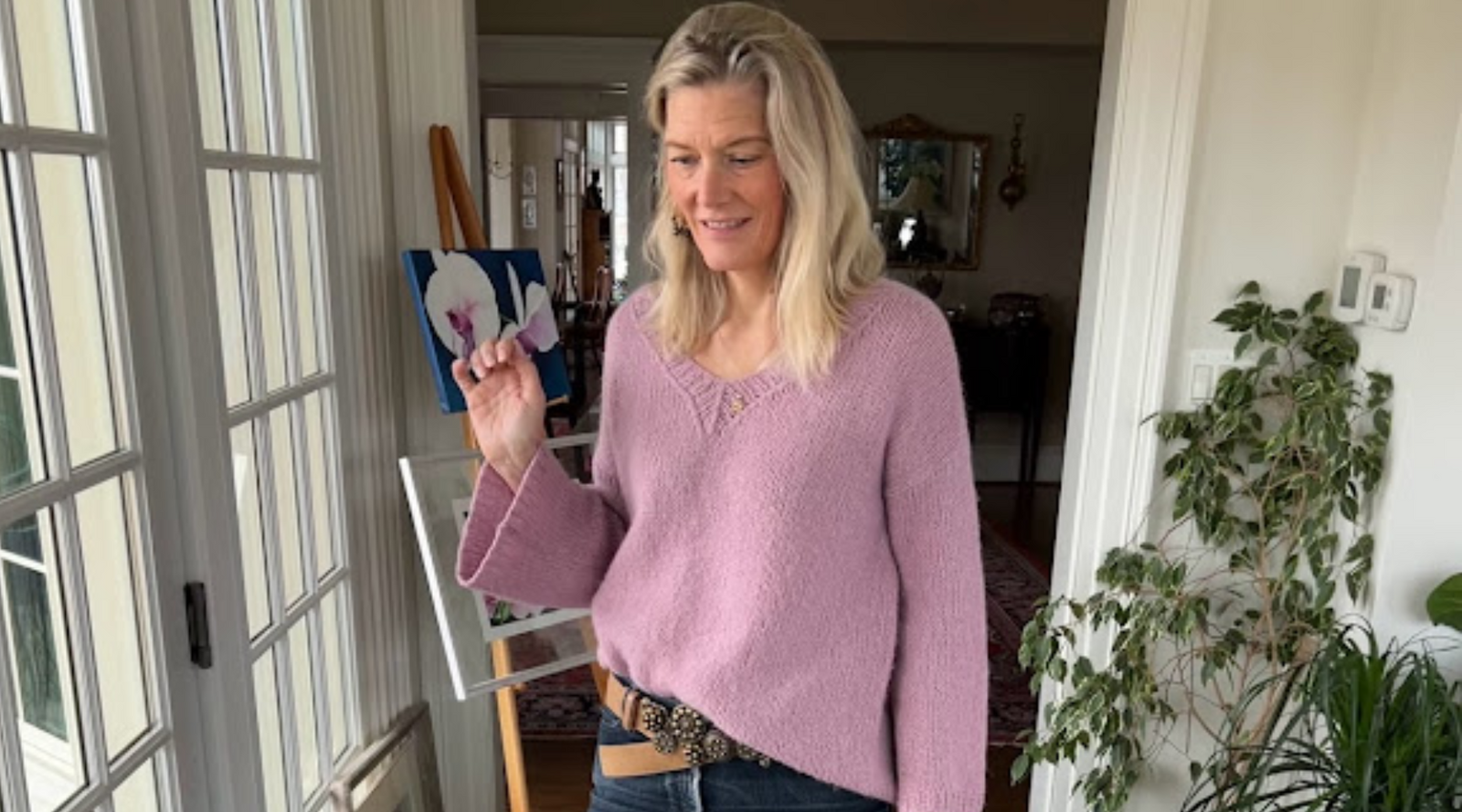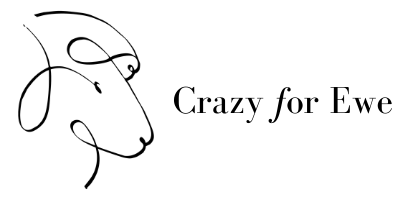Your Cart is Empty
Free shipping on all domestic orders over $150
Free shipping on all domestic orders over $150

What are the basic women's sweater styles to knit?
August 21, 2023 5 min read 2 Comments
A beautiful sweater is one of the most rewarding things to make on your knitting journey. But where to start? Which pattern to choose? What style? What shape? There are so many aspects to a sweater that you can control, and that’s one of the most fun things about knitting. You are in control of the length, the neckline, the shape of the body, and the sleeve length. But there is one aspect to a sweater that is foundational and governs the fit and feel of the sweater. These might be called sleeve or shoulder style, but I usually refer to them asconstruction. By construction, I don’t mean bottom up, top down, seamed, or in the round. These are certainly ways of constructing a sweater, and certain armhole and sleeve shapes lend themselves to certain ways of knitting them. What I’m talking about here is more about the shape of the sweater pieces and the way those pieces fit together- specifically the shoulder, armhole, and sleeve cap. It doesn’t seem like it would be a big deal, but that section of the sweater drives how the sweater will fit and whether or not it will be comfortable and flattering for you.
Set-in Sleeve
The classic sweater silhouette is the set-in sleeve. This design is the most tailored and close fitting of all the styles. It is the shape most familiar to you as the shape of most commercially made garments, from tee shirts to woven blouses. In this style, the stitches are decreased from the bust width to the cross back width. The shoulder seam extends only to the edge of the shoulder. The sleeves have a shaped cap that fits into the shaped armhole and create comfortable curve at the top of the shoulder without any extra fabric in the underarm area.
The set in sleeve is a traditional and classic style that fits around the shoulders for a close, yet comfortable fit. Elegant and timeless, set-in sleeves create garments with structure and a refined look.
The set in sleeve is the most universally flattering and can be designed with as much or as little ease as is needed in the body, armhole, and sleeve. The key is to have the shoulder and sleeve cap seam line up exactly with the top of the arm.
This is the most challenging style to design and to knit. While it is possible to work a sleeve cap seamlessly by picking up the stitches around the armhole and working short rows to create the curved sleeve cap, this style of sleeve is is typically worked in separately and seamed into the garment.
This Custom Fit sweater is an example of a set in sleeve

Dropped Shoulder
In a dropped shoulder construction, the garment width stays the same from the bust all the way up to the shoulder with the extra fabric hanging down over the top of the upper arm. The larger the body, the further down the arm the fabric will hang, and the shorter the sleeve will need to be.
Traditional dropped shoulder sweaters have no shoulder shaping, which gives a lot of extra fabric under the arm. Modern patterns often include shoulder shaping and which eliminates some of the extra fabric.
The dropped shoulder sweater creates a relaxed silhouette with a casual aesthetic. Designed for comfort, the fit is usually oversized and relaxed, allowing plenty of room to move. Most dropped shoulder garments need between 5 and 10 or more inches of positive ease.
Dropped shoulder sweaters can be worked from the bottom up in pieces and seamed or from the top down. The Easy V-neck pullover by Quail Studio is an example of a dropped shoulder sweater

Raglan
In a raglan construction, the armhole shaping decreases the width of the sweater from the bust to the neck width creating a long diagonal line from underarm to neckline. The sleeve cap decreases are done in the same way, decreasing from the bicep width to about 1” at the neckline. Rather than a seam at the top of the shoulder, there are diagonal seams at each side of the front and back of the sweater from the armhole to the neckline.
Raglan sweaters are very comfortable to wear with plenty of ease in the armhole. They have a more tailored look than the dropped shoulder, but still have extra fabric around the underarm and bust area. Raglans are easy to fit since they accommodate a variety of shoulder widths without additional shaping.
Raglans can be worked in the round from the top down or the bottom up. They can also be worked in pieces and seamed. This top-down raglan is often the first sweater a knitter makes.
Kim Hargreaves Contentment is an example of a Raglan pullover.

Yoke Sweaters
Yoke sweaters are worked in the round to create a continuous fabric that extends from the neckline over the shoulders and down to the armholes. This construction creates a smooth, seamless transition between the body and the sleeves.
Yoke style sweaters are comfortable, and easy to fit. As with raglans, there’s no defined shoulder, and the construction provides a natural drape that conforms to the body's contours without being overly restrictive.
Yoke sweaters often have stranded colorwork around the upper arms and shoulder area - think Fair Isle or Icelandic style sweaters. Yoke sweaters are always worked in the round, either bottom up or top down.
Magnolia Bloom is a yoke sweater

Now that you know, what should you do?
There are, of course, other shoulder and sleeve constructions and with the endless options of necklines, sleeve shapes, stitches, colors, and more, there’s no limit to what you can create. The key is to find the shape and sleeve construction that you like and that suits your personal style.
Have a look at some patterns you may have at hope. Check out the schematics and see if you can identify the sleeve construction in different patterns. Then try doing the same thing in your wardrobe. Can you spot the sleeve style and construction in your favorite sweater? Which style do you like best? This is part of the process of not just understanding knitting patterns, but of understanding what you like to wear so you can make better decisions about what patterns to knit based on what you like to wear.
I hope this is helpful. Tell me in the comments what you think and what you find out about your own preferences.
2 Responses
Teri Spinnenweber
August 22, 2023
I think I like the look of the drop shoulder. It feels very relaxed and casual and I think would look best with chunky knits and loose construction. I need to get my act together to make one!
Leave a comment
Subscribe
Sign up to get the latest on sales, new releases and more …


Dana
August 22, 2023
I like them all but do not like oversized sleeves. I need to get in there and start one. I will most likely need a lot of guidance and patience. Great article.